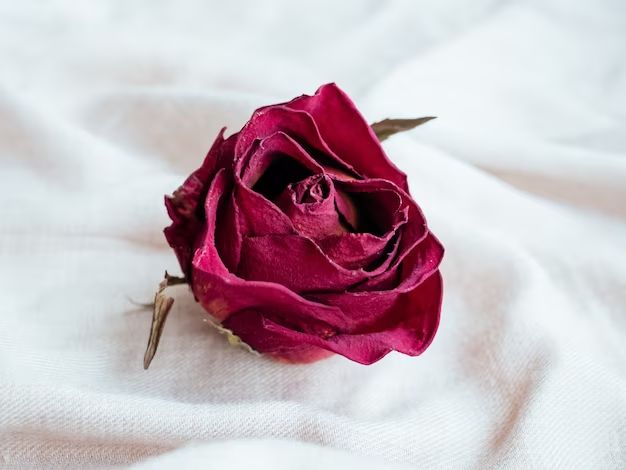The rose has been revered throughout history as a symbol of love, beauty, politics and war. But is a rose also a symbol of life itself? The answer is a resounding yes. The rose encapsulates the very essence of life in its form, function and meaning. Let’s explore why the rose is such an apt representation of life.
The Rose’s Connection to Life Through Form
In its physical form alone, the rose mirrors the cycle of life. A rose begins as a tiny seed that sprouts and grows into a bud. The bud then blooms into a glorious, vibrant flower before wilting and shedding its petals. This is analogous to a human life that starts as an infant, grows into adulthood, ages and eventually dies.
The rose’s reproduction also reflects the biological propagation of life. Roses produce seeds that develop into new plants, just as parents produce offspring. Through this ongoing process of seed production, growth and blooming, roses perpetuate their existence from one generation to the next.
The Rose as a Symbol of Vitality and Energy
When in full bloom, roses pulsate with life energy. Their bright, colorful petals and powerful fragrance are sensorial reminders of life’s vigor and vitality.
We associate the rose’s lush appearance and sweet scent with the peak of its living potential. A fully bloomed rose represents the joy, creativity and passion of a life in its prime.
As roses wilt, their fading petals and decaying fragrance symbolize life’s ephemeral nature. The rose is a metaphor for our own lives – vibrant one moment, wilting the next.
The Rose’s Link to Fertility and Reproduction
Since ancient times, the rose has been considered a symbol of fertility. This meaning arises from the rose’s connection to Aphrodite, the Greek goddess of love, beauty and reproduction.
Red roses in particular are tied to fertility due to their rich, blood-like hue. The red rose has served as an emblem of fertility deities across cultures, including Ishtar and Astarte.
As a result, roses frequently appear at weddings to bless the couple’s union with children. Roses are also often given to new mothers to celebrate childbirth and new life.
| Rose Color | Fertility Meaning |
|---|---|
| Red | Passion, true love, fertility |
| Pink | Grace, happiness, gentility |
| White | Purity, innocence, new beginnings |
| Yellow | Friendship, joy, carefree spirit |
The Rose as a Religious Symbol of Life
In Christianity, the rose holds special meaning as a symbol of life. This stems from its association with the Virgin Mary.
The rosary that Catholics use in prayer takes its name from the rose. Rosary beads are strung together like a garland of roses. Offering roses to Mary demonstrates devotion to the mother of Jesus Christ.
In paradise, Mary is known as the Mystical Rose. She nurtures believers’ faith so they may gain everlasting life in heaven. The rose’s link to Mary and eternal paradise has solidified its meaning as a Christian symbol of life.
Roses and the Life Cycle in Literature
The symbolic relationship between roses and life frequently appears in literature.
In Shakespeare’s famous line “a rose by any other name would smell as sweet,” the rose represents the brevity of life. Names and titles fade in meaning, while the inherent sweetness of the rose endures.
The fairytale Sleeping Beauty describes a princess who pricks her finger on a cursed spinning wheel and falls into a deep sleep. She is finally awakened from her slumber by a prince’s love expressed with a soft kiss. A briar of roses surrounds her castle, blooming when the spell breaks. The story uses the rose as a metaphor for the triumph of everlasting love over mortality.
Roses in Funeral Traditions to Honor Life
Roses play an integral role in funeral customs worldwide to commemorate the departed. They represent the promise of life even in death.
In Western cultures, deep red roses symbolize the blood of life and are often laid at gravesites. Friends and family send rose arrangements to funerals as tokens of love, respect and remembrance.
In India and some parts of Asia, flowers like chrysanthemums and roses are integral parts of funeral decorations. Petals are sometimes scattered over caskets and tombs. Their bright colors and sweet scents are believed to support the deceased’s soul passing into the next life.
The Mystical Rose in Alchemy as the Cycle of Life
In medieval alchemy, the rose symbolized balance and integration of complementary energies and matter. This related to alchemy’s quest to produce the elixir of life by combining raw elements into a perfected whole.
The highest level of enlightened wisdom in alchemy was represented by the Mystical Rose or Rosy Cross. This was the inner sacred marriage of opposites into profound wholeness. The Mystical Rose expressed the alchemical Magnum opus, or Great Work, which reflected the infinite process of spiritual evolution.
In alchemical drawings, roses were often intertwined with snakes or dragons to depict integration between the physical and spiritual planes. The coiled dragon symbolized primal material energy, while the blooming Mystical Rose represented enlightened consciousness. Their union reflected the alchemical process of raising energy from dense matter into refined spirit.
Conclusion
As we have seen, the rose has served as an enduring symbol of life across cultures and historical eras. Its physical attributes and life cycle mirror that of a living being. It represents key aspects of life like fertility, vitality, love and the passage to death.
The rose’s connection to spiritual figures affirms its meaning as a sacred symbol of life’s divinity. And in practices from alchemy to funeral rites, the rose stands testament to life’s eternal continuity.
So the next time you stop and smell the roses, reflect on all that this lovely bloom conveys about the miracle of being alive.


